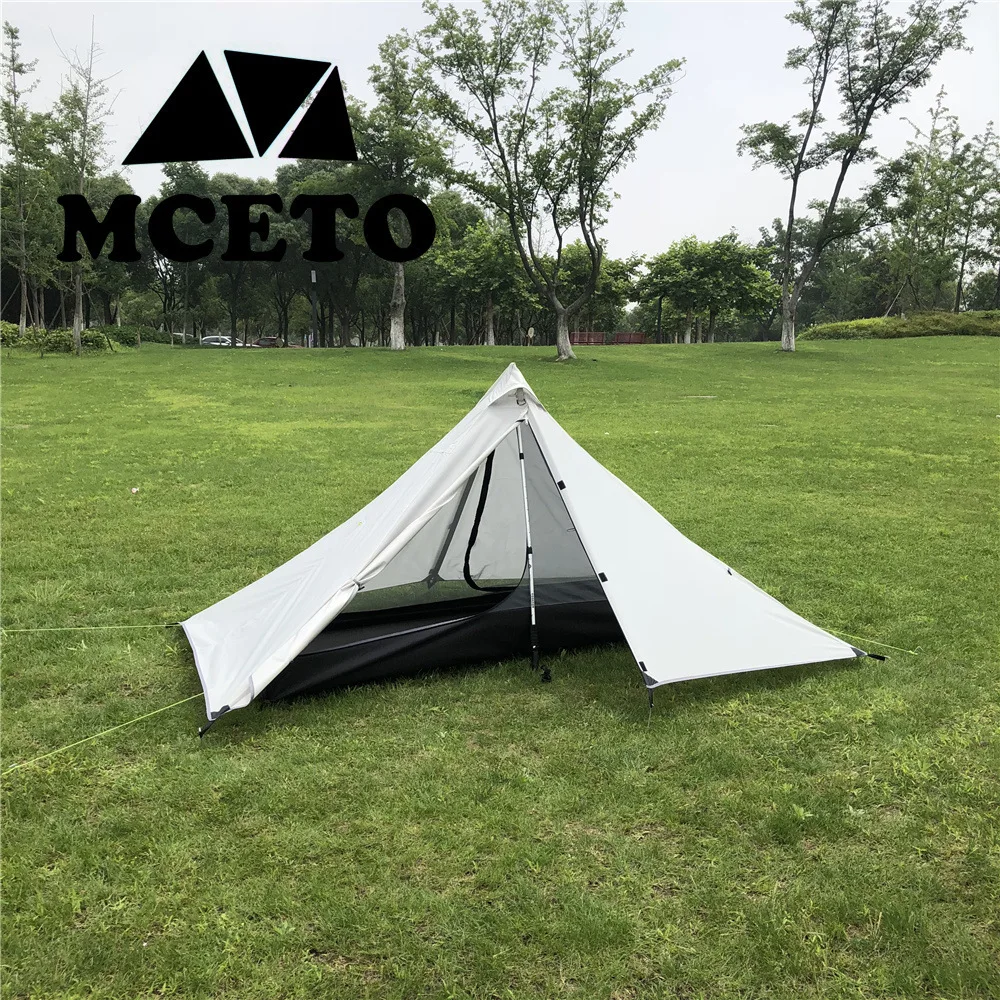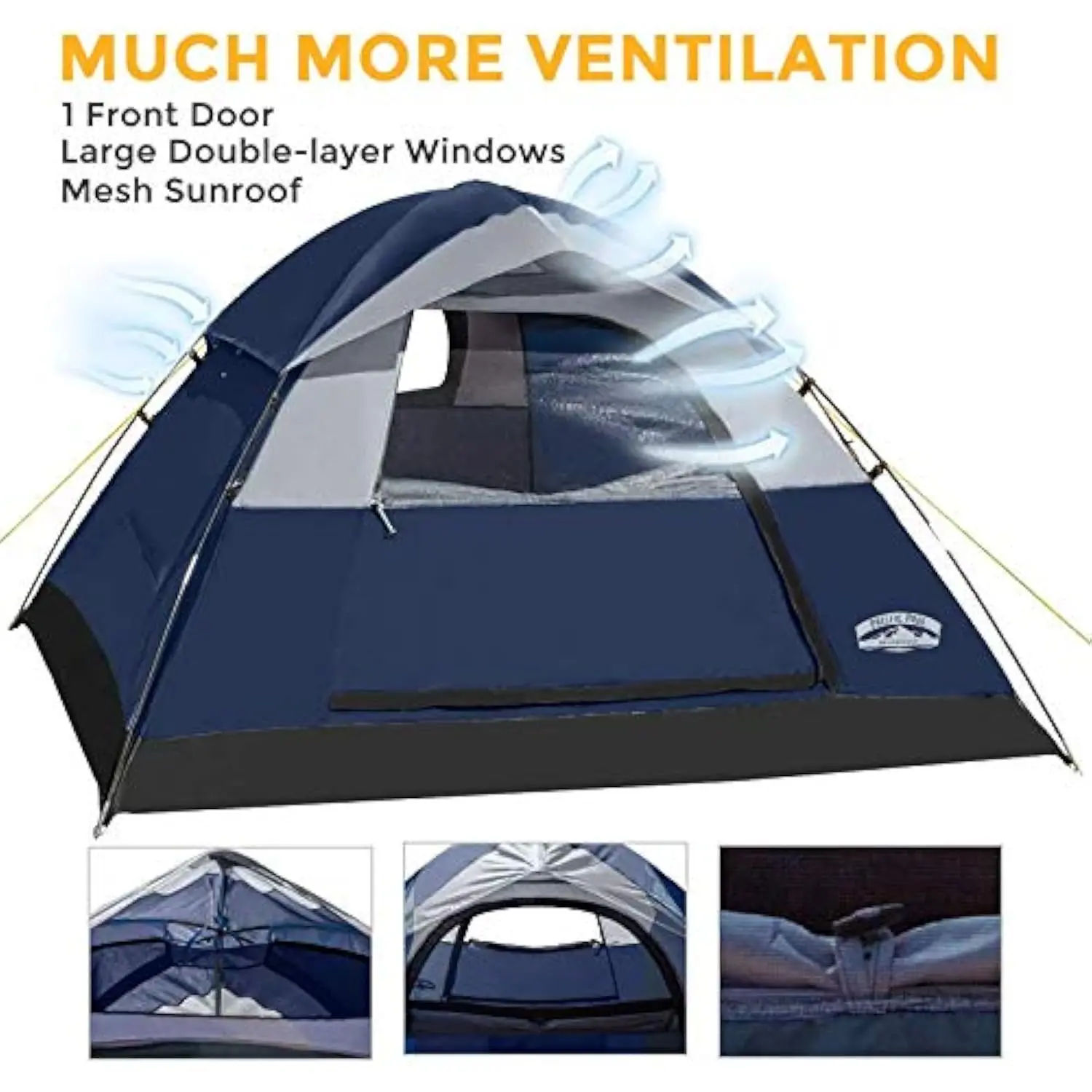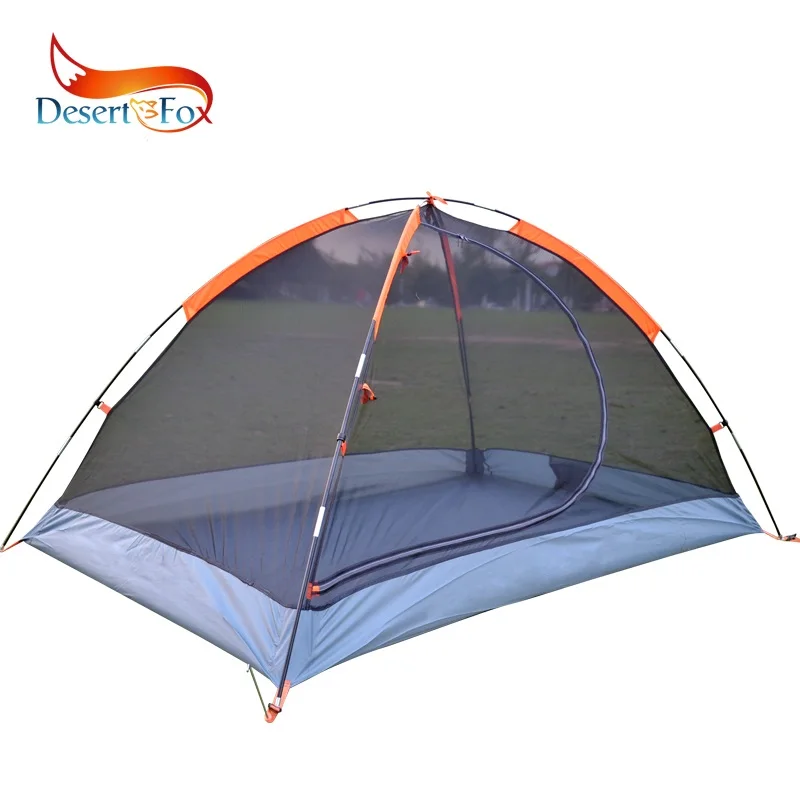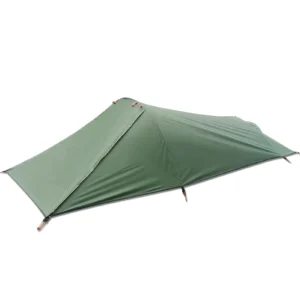Understanding the Balance Between Weight and Comfort in Ultralight Shelters
Finding the sweet spot between carrying less weight and maintaining comfortable living space is the central challenge of ultralight backpacking. When every ounce matters, backpackers must make strategic decisions about what comfort features are truly essential and which can be left behind.
Ultralight shelters—typically defined as those weighing under 2-3 pounds (0.9-1.4 kg)—require us to think differently about comfort. Rather than the spaciousness of car camping tents, comfort in ultralight shelters involves:
- Physical comfort: Protection from rain, wind, bugs, and temperature fluctuations
- Psychological comfort: Having enough space to sit up, organize gear, and feel secure rather than claustrophobic
The pursuit of “smart comfort” focuses on features that provide maximum livability with minimal weight penalties. This approach recognizes that proper rest and recovery directly impact your hiking performance, decision-making abilities, and overall enjoyment of the wilderness experience.
When exploring the world of compact shelters for two campers, understanding this balance becomes even more crucial. The features that contribute most to perceived comfort often aren’t the heaviest, but rather those designed with efficiency and functionality in mind.
The ultralight philosophy isn’t about suffering through uncomfortable nights—it’s about identifying what makes a tent truly ultralight while still meeting your personal comfort needs. By focusing on smart design rather than simply eliminating features, today’s ultralight shelters can provide remarkable comfort at previously impossible weights.
Critical Design Features That Enhance Space and Comfort
Interior Volume and Usable Space
When evaluating ultralight shelters, raw dimensions tell only part of the story. The true measure of livable space depends on how effectively those dimensions translate into usable volume.
The critical factors that determine usable space include:
- Wall angle and geometry: Steep walls create more usable space than shallow angles, allowing you to use more of the floor area without feeling cramped
- Peak height location: Centered peaks provide limited headroom, while offset peaks or ridge designs create larger zones where you can sit upright
- Floor dimensions and shape: Rectangular floors typically provide more usable space than tapered designs, though the latter save weight
Most adults find a minimum sitting height of 40-42 inches (101-107 cm) comfortable for changing clothes and performing in-tent tasks. However, the perception of space varies widely based on shelter design. Two tents with identical floor areas can feel dramatically different based on their architecture.
When considering if a 2-person tent is actually big enough for your needs, focus not just on square footage but on how effectively the design translates that space into comfort. Features like spreader bars at the head end or clever pole structures can dramatically increase livable space with minimal weight penalty.
Vestibule Design and Functionality
Vestibules essentially serve as the mudroom of your backcountry home, providing crucial overflow space that keeps the sleeping area clean and organized. They represent one of the most significant comfort enhancements for minimal weight.
Key vestibule considerations include:
- Size and coverage: A vestibule of 7-10 square feet (0.65-0.93 square meters) typically provides adequate space for pack storage and protected entry/exit
- Configuration: Dual vestibules allow separate entrances for two hikers and double the storage space, while single vestibules concentrate the protected area
- Door design: Doors that can be configured in multiple positions allow for ventilation control and weather protection
Vestibules dramatically enhance livability by creating a transition zone between inside and outside, keeping wet gear separate from your sleeping area. Understanding tent vestibules helps you appreciate how they extend living space beyond the tent body itself, creating a more comfortable backcountry experience.
Ventilation Systems and Condensation Management
Nothing diminishes comfort faster than waking up to a shower of condensation dropping from your tent ceiling. Effective ventilation systems prevent this common ultralight shelter problem.
Ventilation effectiveness depends on:
- Air pathway design: High and low venting creates natural convection airflow that exhausts moisture
- Adjustability: The ability to fine-tune ventilation openings for different conditions
- Mesh placement: Strategic mesh panels that maintain airflow while keeping bugs out
The difference between single-wall vs. double-wall ultralight tents is particularly significant for condensation management. Double-wall designs separate the inner breathable body from the waterproof fly, creating a buffer zone for moisture to collect without dripping on occupants. Single-wall designs save weight by combining these layers but require more active ventilation management.
Proper ventilation not only prevents moisture buildup but also regulates interior temperature, creating a more comfortable sleeping environment regardless of outside conditions.
Weather Protection and Stability
True comfort in the backcountry means confidence in your shelter’s ability to protect you when conditions deteriorate. Several design elements contribute to this security:
- Waterproofing: Fabrics with hydrostatic head ratings of 1,200-3,000mm provide sufficient water resistance for most conditions
- Wind resistance: Strategic guy-out points and aerodynamic shapes prevent flapping and potential collapse
- Storm features: Protected entrances, coverage to ground level, and reinforced stress points
- Complete enclosure: Full bug protection through no-see-um mesh and sealed seams
Waterproof backpacking tents with proper stability features provide peace of mind that directly translates to comfort. When you trust your shelter to perform in challenging conditions, you can relax regardless of what’s happening outside.
Ultralight Shelter Types and Their Comfort Profiles

Double-Wall Tents: Balance of Protection and Comfort
Traditional double-wall tents represent the most familiar shelter concept adapted for ultralight backpacking. These designs feature a separate inner tent body (typically mesh and lightweight fabric) and an outer rainfly.
Key comfort advantages include:
- Superior condensation management through the separation of breathable and waterproof layers
- Comprehensive bug protection with full mesh inner tents
- Familiar setup process with freestanding or semi-freestanding designs
- Option to use just the inner tent in dry, bug-heavy conditions
Most double-wall ultralight shelters weigh between 2-3 pounds (0.9-1.4 kg) for solo models and offer a comfort experience closest to traditional camping tents. The weight penalty compared to more minimalist options is the tradeoff for this familiar comfort.
Ultralight backpacking tents in the double-wall category typically provide the gentlest introduction to ultralight principles for backpackers transitioning from heavier equipment.
Single-Wall and Hybrid Designs: Weight Savings with Comfort Considerations
Single-wall shelters eliminate the separate rainfly, incorporating waterproof-breathable fabric directly into the tent body. This approach typically saves 25-40% of weight compared to double-wall designs.
Comfort considerations include:
- Increased importance of ventilation features to manage condensation
- Typically simpler and faster setup, reducing exposure time in bad weather
- Often lighter overall weight, reducing physical strain during hiking
- May incorporate partial double-wall sections in hybrid designs for condensation-prone areas
These designs excel in low-humidity environments or when weight savings is prioritized over absolute condensation protection. Strategic fabric placement—using solid waterproof material where protection is needed and mesh where ventilation is beneficial—helps maximize comfort within the weight constraints.
Trekking Pole Shelters: Maximizing Space-to-Weight Ratio
By replacing dedicated tent poles with the trekking poles many hikers already carry, these shelters achieve remarkable space-to-weight ratios.
Comfort advantages include:
- Impressive interior volume relative to carried weight
- Often more headroom than traditional pole designs
- Typically larger floor areas for the same carried weight
- Adjustable height based on pole extension
The versatile designs of trekking pole backpacking tents allow them to adapt to different terrain and conditions. While setup requires slightly more practice than freestanding designs, the space and weight benefits make them increasingly popular among experienced ultralight backpackers.
Lightweight Backpacking Tent, Ultralight Backpacking Tent, Ultralight Bivy Tent
Ultralight Single Person Camping Tent with Aluminum Poles for 3-Season Backpacking Waterproof DesignPrice range: $94.88 through $326.82 Select options This product has multiple variants. The options may be chosen on the product pageLightweight Backpacking Tent, Ultralight Backpacking Tent, Waterproof Backpacking Tent
$391.05 Select options This product has multiple variants. The options may be chosen on the product pageHeavy Duty 4 Season Tent, Mountaineering Tent, Winter Camping Tent
$870.40 Select options This product has multiple variants. The options may be chosen on the product pageCompact Backpacking Tent, Lightweight Backpacking Tent, Waterproof Camping Tent
$335.52 Select options This product has multiple variants. The options may be chosen on the product pageUltralight Backpacking Tent, Ultralight Dome Tent, Winter Camping Tent
Price range: $369.63 through $370.07 Select options This product has multiple variants. The options may be chosen on the product pageHeavy Duty 4 Season Tent, Ultralight Freestanding Tent, Winter Camping Tent
$3,722.66 Select options This product has multiple variants. The options may be chosen on the product page
Minimalist Options: Tarps, Bivies, and Modular Systems
At the extreme ultralight end of the spectrum, various minimalist options prioritize weight savings above all else while still providing essential protection.
Comfort considerations vary widely:
- Tarps: Provide excellent coverage-to-weight ratios and adaptable pitching options but require more skill for comfortable setup and lack integrated bug protection
- Bivy sacks: Offer minimal weight and footprint but very limited interior space, essentially functioning as waterproof shell for your sleeping bag
- Modular systems: Allow components to be combined or separated based on conditions, providing flexibility for changing environments
Most minimalist systems weigh under 16 oz (454g), with some ultralight tarps weighing just 4-8 oz (113-227g). Ultralight bivy tents represent a compromise position, adding minimal structure to a bivy concept for slightly improved livability.
These options require more advanced skills to maintain comfort but reward experienced users with the lightest possible shelter solutions.
Strategies to Enhance Comfort Beyond Shelter Design
Campsite Selection: The Foundation of Comfort
Even the most luxurious shelter will feel uncomfortable when pitched in a poor location. Smart site selection can significantly enhance the comfort of any ultralight shelter:
- Terrain assessment: Look for naturally flat areas free from roots, rocks, and potential water channels
- Natural protection: Use landscape features like trees or rock formations as windbreaks
- Drainage patterns: Avoid depressions where water might collect during rain
- Sun exposure: Consider morning sun positions for natural warmth and drying
When choosing the ultimate compact shelter for two, remember that proper placement can transform its livability. A well-placed minimal shelter often provides better rest than a poorly situated luxury tent.
Always follow Leave No Trace principles while seeking comfortable sites—look for established tent spots rather than creating new impact areas, and stay the recommended distance from water sources.
Optimizing Your Sleep System
Your shelter is only one component of backcountry comfort. The sleep system working in harmony with your shelter creates the complete comfort experience:
- Sleeping pad selection: Insulation value (R-value) appropriate for expected temperatures, along with thickness that matches your sleeping style
- Sleeping bag or quilt: Temperature rating suitable for conditions, with appropriate fit for your body and sleeping position
- Pillow solution: Inflatable pillows now weigh just 1-3 oz (28-85g) yet dramatically improve sleep quality
- Base layer clothing: Clean, dry sleeping clothes that insulate while allowing moisture to escape

Different shelter types complement different sleep systems. Open designs like tarps benefit from sleeping bags with water-resistant shells, while enclosed shelters may allow for lighter quilt options where draft protection is less critical.
Gear Organization and Space Utilization
Effective organization transforms limited space into comfortable living quarters:
- Prioritize accessibility: Keep essential items like headlamp, water bottle, and basic toiletries within reach
- Utilize built-in storage: Take advantage of gear lofts, pockets, and attachment points
- Create zones: Designate specific areas for sleeping, changing, and gear storage
- Vestibule management: Arrange wet gear to allow airflow while maintaining accessibility
Making the most of available space is especially important in compact backpacking tents, where every square inch serves multiple purposes throughout your trip. Simple organizational habits like stuffing tomorrow’s clothes into your stuff sack pillow or using compression sacks can dramatically improve livability.
Techniques for Minimizing Condensation
Beyond ventilation features built into your shelter, behavioral strategies can significantly reduce moisture buildup:
- Avoid cooking inside: Food preparation releases significant moisture
- Shake off wet gear: Remove excess water before bringing items inside
- Site selection for airflow: Choose locations with natural air movement
- Leave wet clothes in the vestibule: Separate moisture sources from sleeping area
- Morning management: Wipe condensation with a small pack towel before it drips onto gear
Understanding condensation formation—warm, moist air contacting cold surfaces—helps you prevent it. Opening vents on the downwind side while keeping upwind vents partially closed creates air movement without letting in precipitation.
Finding Your Ideal Space-to-Weight Balance
Self-Assessment: Know Your Comfort Requirements
Identifying your personal comfort thresholds helps you choose appropriate shelter features:
- Do you feel claustrophobic in confined spaces?
- How sensitive are you to noise like rain hitting shelter fabric?
- Do you need to sit fully upright or just enough to change clothes?
- How important is quick, simple setup when you’re tired?
- Does separate sleeping space from your partner enhance your rest quality?
Your answers to these questions will guide your shelter selection. For instance, side sleepers typically need more floor width, while restless sleepers benefit from tapered designs that keep them centered on their pads.
Understanding various camping shelter options for two helps you evaluate which features match your specific comfort needs rather than simply following ultralight dogma.
Comparing Key Metrics When Shopping for Shelters
When evaluating shelters, focus on specifications that directly impact comfort:
- Floor dimensions: Not just square footage but the actual length and width that accommodate your sleeping pad
- Peak height: Both the maximum height and where that height occurs within the shelter footprint
- Vestibule area: Measured in square feet/meters to compare storage capacity
- Doors and access: Number and size of entry points relative to occupancy
- Materials: Fabric noise levels, stretch characteristics, and durability
Bear in mind that manufacturer specifications may measure dimensions differently. Some list minimum floor dimensions while others measure at the widest point, which can create misleading comparisons.
The space-to-weight ratio—dividing usable interior space by total carried weight—provides a useful metric for comparing overall efficiency across different shelter designs.
Testing Before Committing
Nothing replaces hands-on experience with a shelter before committing to it for backcountry use:
- At-home setup: Practice in your yard or local park to evaluate livability
- Sit-up test: Check if you can sit upright without touching the ceiling
- Changing clothes test: Attempt to change your layers inside to gauge usable space
- Entry/exit practice: Evaluate how easily you can move in and out, especially with wet gear
- Simulated weather: Set up during light rain or wind to check performance

Many outdoor retailers offer rental programs or gear libraries that allow you to test shelters before purchasing. Online retailers often have generous return policies that facilitate trial periods.
Mastering two-person lightweight tent setup techniques ensures you’ll maximize the available space in whatever shelter you choose, making even modest dimensions feel more comfortable.
Balancing Comfort in Different Environments and Conditions
Different environments demand different comfort considerations:
- Desert camping: Prioritize ventilation, sun protection, and sand/dust management
- Alpine environments: Focus on wind stability and condensation control in rapidly changing conditions
- Humid forests: Emphasize bug protection and moisture management
- Winter camping: Consider snow-loading strength and ventilation that won’t fill with snow
At higher elevations, the increased UV exposure accelerates fabric degradation, while strong winds test structural integrity. Properly pitched shelters with full guy-out points become essential for comfort and safety.
Seasonal transitions require adaptable approaches. Summer may prioritize ventilation and bug protection, while shoulder seasons demand more comprehensive weather protection. Four-season winter tents for two provide maximum protection but typically carry a weight penalty compared to three-season options.
The most versatile shelters include modular components or adjustable features that adapt to changing conditions, allowing comfort optimization across different environments.
Is Ultralight Comfort Worth the Investment?
Premium ultralight shelters typically command higher prices than their conventional counterparts, raising questions about value. Consider these factors when evaluating the investment:
- Cost per night: Dividing purchase price by expected nights of use often reveals that even expensive shelters cost just a few dollars per night over their lifespan
- Comfort enhancement: The direct impact on sleep quality and recovery during multi-day trips
- Physical impact: Reduced pack weight decreases strain and fatigue
- Material longevity: Premium ultralight fabrics often offer surprisingly good durability despite their minimal weight
For frequent backpackers, the combined benefits of reduced carrying weight and enhanced comfort typically justify the investment. However, occasional users might find the middle ground of good weight ultralight tents offers better value than the absolute lightest options.
Remember that the most expensive shelter isn’t necessarily the most comfortable for your specific needs. Strategic selection based on your personal comfort priorities often yields better results than simply pursuing the priciest or lightest option.
Are Ultralight Shelters Comfortable Enough for Extended Trips?
Many backpackers wonder if ultralight shelters provide sufficient comfort for long-duration adventures. Experience shows that properly selected ultralight shelters can indeed support extended backcountry travel.
Through-hikers regularly spend months living in ultralight shelters, demonstrating their viability for long-term use. The key factors for extended comfort include:
- Durability: Construction that withstands continuous use and variable conditions
- Adaptability: Features that adjust to changing environments and weather patterns
- Livable design: Space efficiency that prevents the psychological fatigue of confinement
- Reliable protection: Consistent performance that builds trust in your shelter
Ultralight freestanding tents often provide an excellent balance for longer trips, offering quick setup on varied terrain while maintaining comfort features.
Extended trips actually reveal the benefits of thoughtfully designed ultralight shelters. The reduced physical toll of carrying lighter gear over hundreds of miles typically outweighs minor comfort compromises, especially as your body adapts to backcountry living.
The real secret to long-term comfort isn’t excess space or features—it’s intelligent design that eliminates frustrations while providing reliable protection. By focusing on the elements that truly matter for your personal comfort, today’s ultralight shelters can transform from mere necessities into welcome backcountry homes, no matter how long the journey.







